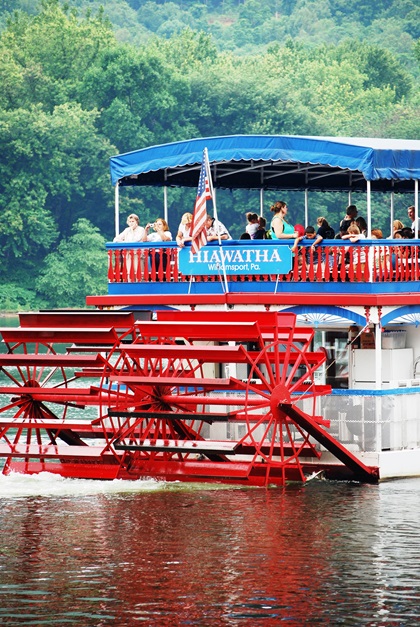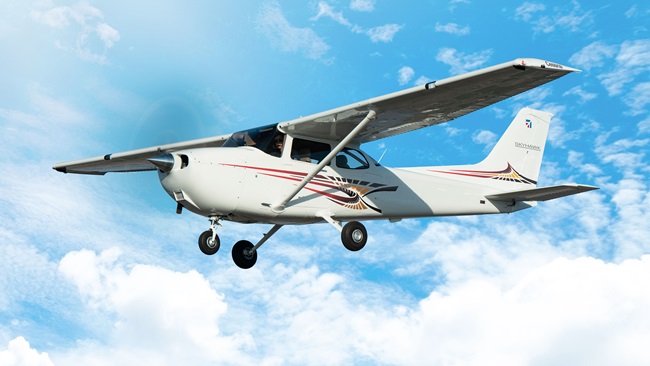Where Thunderbolts are made, baseball dreams come true
Williamsport, Pennsylvania
If you think professional baseball has grown overpopulated with overpaid prima donnas and has collectively lost touch with the game’s roots, you will find it distilled to its purest form each August in stadiums where admission costs nothing, and youth play for love, not money.

You will find the local airport along the West Branch of the Susquehanna River in Williamsport, Pennsylvania, about two miles from the complex of stadiums and fields surrounding the headquarters of Little League International Baseball, where young ball players arrive each August with their families ready to cheer them on to a championship.
Little League baseball is a very good thing; it keeps the parents off the streets.
— Yogi Berra
They travel from around the world, not just the United States, having qualified for, at minimum, the one prize they will all take home: To be forever after able to say they played in the Little League Baseball World Series, August 17 to August 28 this year.
Williamsport is located in a valley of the Appalachian Mountains of central Pennsylvania. It’s 155 miles west of Hoboken, New Jersey (and New York City), and 147 miles southwest of Cooperstown, New York. Do you know what those towns have to do with baseball?
(Actual) boys of summer
In 1939, as the world was emerging from the Great Depression and descending into war, a three-team baseball league for boys was formed in Williamsport. It was incorporated as a nonprofit organization, Little League Baseball Inc., in 1950, to organize youth baseball and softball leagues in the United States and around the world. Numerous local and regional tournaments in more than 80 countries determine the teams that will play in the World Series. Tournaments are held in countries including Canada, Mexico, Panama, Peru, Venezuela, Germany, Poland, Japan, the Philippines, South Korea, and Taiwan. The lucky winners will experience the best of American hospitality at Williamsport. Little League Baseball is the world’s largest youth sports program, with nearly 200,000 teams throughout the world.
Fans cannot reserve tickets for the Little League Baseball World Series. Admission is free and seating is on a first-come, first-served basis. During the “Championship Weekend,” stadium seats are reserved for team members and their families, but there is always space to sit on the grassy hill overlooking the outfield.
World of Little League Museum
College town
Williamsport is home to Lycoming College and the Pennsylvania College of Technology, both of which pitch low student-to-faculty ratios and modern programs with long histories. Lycoming College was founded in 1812 as the Williamsport Academy, and became Lycoming College in 1947, and is one of the 50 oldest colleges in the United States, with more than 16,000 alumni. Pennsylvania College of Technology boasts more than 62,000 alumni and a graduation placement rate just over 96 percent for 2019–2020.
Where thunder is made

Lycoming is a familiar name to general aviation pilots, though some may not be aware that it is shared by the county and the local liberal arts college, and the more familiar (to pilots) Lycoming Engines, where artisans create modern aviation powerplants dubbed Thunderbolts. AOPA Pilot visited to document the painstaking process of producing bespoke engines made by hand.
The factory has long drawn pilots, either on official business or just to tour the factory, but the COVID-19 pandemic put the kibosh on public tours not long after we met the Thunderbolt team, in March 2020.
“We’re working to reopen factory tours soon,” company spokesman Matt Joiner advised via email August 11. He advised prospective visitors to keep an eye on the Lycoming website and social media for pending advisories on the resumption of tours.
Logging millions
One wouldn’t necessarily think of Williamsport as a home of millionaires, but big money was made here in the early nineteenth century from timber cutting in the surrounding forests. It was known as the “Lumber Capital of the World” and claimed to have more millionaires in a small area than anywhere. Drive or walk through the “Millionaire's Row Historic District,” a district of 263 buildings from as early as 1855. Most of the notable buildings are Victorian homes, plus a number of churches.

River cruises
The West Branch of the Susquehanna River separates South Williamsport from Williamsport, and as a transportation asset it made much of Williamsport’s history possible. The river’s value as a tourist attraction was not lost on the community, which banded together in the 1980s to purchase and operate a tour boat that sails daily from May through October. The Hiawatha Paddlewheel Riverboat offers daily cruises as well as special events advertised on social media.
Parks and recreation
Pennsylvania state parks are excellent, and there are numerous parks nearby, including the 2,158-acre Little Pine State Park. Located 20 miles northwest of Williamsport, Little Pine features a 45-acre lake that is open for swimming, boating, and fishing; miles of hiking trails; a campground; and a shooting range.
Closer to Williamsport is Susquehanna State Park, a stretch of land along the north shore of the Susquehanna River, about two miles southwest of downtown. It’s good for walking, biking, fishing, and picnicking, and also the mooring point of the Hiawatha.
Tourist information
To organize your visit to Williamsport, first stop at the Lycoming County Visitors Center, at 102 W. Fourth St., to pick up maps and information. It is open Tuesday to Saturday from 10 a.m. to 3 p.m., You can also find a wealth of information online ahead of time, including a tourist guide, which has information on events, sights to see, hotels, and restaurants. The statewide tourism organization provides similar resources.






Follow the river to Piper
Williamsport is about 25 nautical miles east of Lock Haven, Pennsylvania, where another runway runs roughly parallel to the West Branch of the Susquehanna River. Lock Haven, Pennsylvania, is particularly fun to visit in June during the Sentimental Journey Fly-In at William T. Piper Memorial Airport. This was the site of the original Piper Aircraft Co. factory, where many of the classic Piper aircraft rolled off the assembly line.
The Piper Aviation Museum is housed in a former Piper engineering building where many Piper models were designed. Next door to the museum, visitors can see the original factory building (formerly a silk mill and now heavily overgrown) and later assembly line buildings where many Piper aircraft were built.


